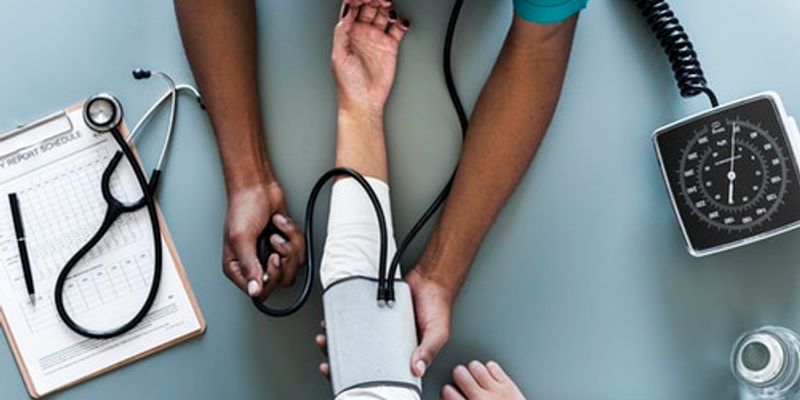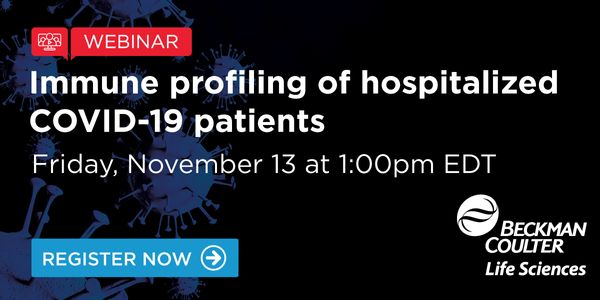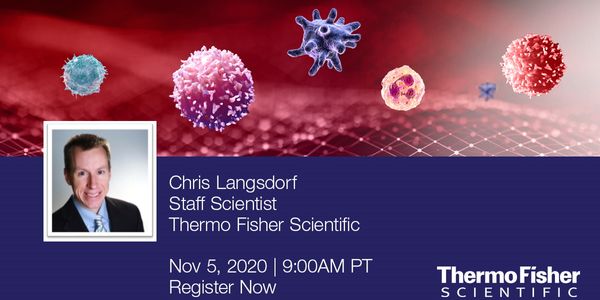Clinical Virology
A branch of medicine that consists of isolating one or several viruses responsible for some human pathologies.
-
DEC 03, 2020 | 3:00 PMThe presentation will provide a review of major emerging zoonotic virus outbreaks from Hendra virus in 1994 in Australia to SARS-CoV-2 in China 2019 and our latest findings on bat biology an...NOV 19, 2020 | 7:00 AMDATE: November 19, 2020 TIME: 7am PST Congenital CMV is the most frequent infectious cause of neonatal malformation in developed nations. Yet, this disease is largely under-recognized by hea...NOV 17, 2020 | 5:00 AMDate: November 17, 2020 Time: 5:00am (PST), 8:00am (EST), 2:00pm (CET) Septicemia is a serious clinical condition with roundabout 123,000 cases of sepsis a year in England. In recent years t...NOV 13, 2020 | 10:00 AMDate: November 13, 2020 10:00am PST, 1:00pm EST Coronavirus disease 2019 (COVID-19) is currently a global pandemic, but human immune responses to the virus remain poorly understood....NOV 12, 2020 | 12:00 AMImmunohistochemistry (IHC) is used to determine spatial relationships where we can identify the localization of target proteins in specific regions and cells of a tissue. IHC has been the go...NOV 05, 2020 | 9:00 AMDATE: November 5, 2020 TIME: 9:00am (PDT), 12:00pm (EDT) With accelerating development and approval of cell therapies, biologic drugs, and antiviral treatments comes a need for more robust a...OCT 20, 2020 | 5:00 AMDate: October 20, 2020 Time: 5:00am (PDT), 8:00am (EDT), 2:00pm (CEST) With the COVID-19 pandemic as one of the biggest challenges to our modern world, Bruker has taken an active part suppor...OCT 08, 2020 | 10:30 AMImmunohistochemistry (IHC) is used to determine spatial relationships where we can identify the localization of target proteins in specific regions and cells of a tissue. IHC has been the go...Speaker: Vivian Barry, MSPresented at: Cancer Research & Oncology Week Virtual Event Series 2020
Sponsored By: Roche DiagnosticsOCT 07, 2020 | 12:00 PMCancer is a multifactorial disease, and its genesis and progression are extremely complex. The scope of precision oncology is rapidly expanding to address previously undruggable targets. The...Speaker: Dr. Ming LiuSEP 17, 2020 | 2:00 PMLearning Objectives: 1. Understanding the integral value of collaboration for advancement in scientific research; how to establish and grow academic, Pharma, and industry connections 2. Lear...SEP 17, 2020 | 12:00 AMThis presentation will discuss the use of the FDA EUA process to implement SARS-CoV-2 assays to address the COVID-19 pandemic. The use of a team-based approach, through an Incident Command s...SEP 10, 2020 | 3:00 PMWhile global demand for food is expected to increase significantly (70% by 2050), the agricultural industry is suffering from a decline in soil fertility, the adverse effects of climate chan...Speaker: Brajesh SinghSEP 10, 2020 | 2:00 PMWhile live cell imaging offers advantages over traditional static imaging, this approach has been challenging for studying microbes due to the difficulty in tracking very small cells in a si...Speaker: Cindy Chen, PhDSEP 10, 2020 | 1:00 PMIn Pacific Northwest watersheds several species of Pacific salmonid fishes are hosts for the rhabdovirus infectious hematopoietic necrosis virus (IHNV). In this multi-host ecosystem speciali...SEP 10, 2020 | 12:00 PMIn this webinar, we will present QIAGEN CLC Genomics Workbench and its utility for bacterial isolate identification, strain discrimination using core genome multi-locus typing (cgMLST) and d...Speaker: Jonathan Jacobs, PhDSEP 10, 2020 | 11:00 AMLearning Objectives: 1. Understand the challenges of extracting DNA from human samples for microbiome analysis, and learn about the best technologies for accomplishing this 2. Learn about pr...Speaker: Dominic O'Neil, MS, MBASEP 10, 2020 | 10:00 AMEnigmatic and often vilified, viruses are now known to play important and possibly indispensable roles in the biology and ecology of cellular organisms. Evidence of viral impacts are everywh...SEP 10, 2020 | 9:00 AMCongenital CMV is the most frequent infectious cause of neonatal malformation in developed nations. It is more prevalent than other neonatal conditions such as spina bifida and Down syndrome...Speaker: William Rawlinson, PhDSEP 10, 2020 | 7:30 AMThe selective pressure placed on the resident microbiota by local changes in the host environment – DNA damage, chronic inflammation, metabolic shifts, barrier damage, reduced immunosu...Speaker: K. Leigh Greathouse, PhD, MPH, MS, RDPresented at: Microbiology Week Virtual Event Series 2020
SEP 10, 2020 | 6:00 AMCoronavirus disease 2019 (COVID-19), caused by SARS-CoV-2, is spreading rapidly across the world and was announced as a “global pandemic” by the World Health Organization (WHO) o...Speaker: Quan Wang, PhD , Renhong Yan, PhDSEP 10, 2020 | 12:00 AMViruses are the causative agents of approximately 12% of human cancers. The most recently discovered herpesvirus, Kaposi’s sarcoma herpesvirus (KSHV) is known to cause three human canc...SEP 10, 2020 | 12:00 AMMicrobial biofilms form on all aquatic surfaces and can harbor pathogenic bacteria. In the aquaculture industry, Flavobacteria species can cause serious diseases and lead to high mortality....SEP 10, 2020 | 12:00 AMSepsis is a life-threatening condition that is caused by the immune system’s inability to respond appropriately to an infection. How sepsis can change the gut microbiome in ways that a...SEP 10, 2020 | 12:00 AMThe transfer of antimicrobial resistance genes (ARG) to pathogenic microbes is a major concern in modern medicine. Antibiotic therapies are often rendered ineffective by horizontal acquisiti...
DEC 03, 2020 | 3:00 PM
The presentation will provide a review of major emerging zoonotic virus outbreaks from Hendra virus in 1994 in Australia to SARS-CoV-2 in China 2019 and our latest findings on bat biology an...
NOV 19, 2020 | 7:00 AM
DATE: November 19, 2020 TIME: 7am PST Congenital CMV is the most frequent infectious cause of neonatal malformation in developed nations. Yet, this disease is largely under-recognized by hea...
NOV 17, 2020 | 5:00 AM
Date: November 17, 2020 Time: 5:00am (PST), 8:00am (EST), 2:00pm (CET) Septicemia is a serious clinical condition with roundabout 123,000 cases of sepsis a year in England. In recent years t...
NOV 13, 2020 | 10:00 AM
Date: November 13, 2020 10:00am PST, 1:00pm EST Coronavirus disease 2019 (COVID-19) is currently a global pandemic, but human immune responses to the virus remain poorly understood....
NOV 12, 2020 | 12:00 AM
Immunohistochemistry (IHC) is used to determine spatial relationships where we can identify the localization of target proteins in specific regions and cells of a tissue. IHC has been the go...
NOV 05, 2020 | 9:00 AM
DATE: November 5, 2020 TIME: 9:00am (PDT), 12:00pm (EDT) With accelerating development and approval of cell therapies, biologic drugs, and antiviral treatments comes a need for more robust a...
OCT 20, 2020 | 5:00 AM
Date: October 20, 2020 Time: 5:00am (PDT), 8:00am (EDT), 2:00pm (CEST) With the COVID-19 pandemic as one of the biggest challenges to our modern world, Bruker has taken an active part suppor...
OCT 08, 2020 | 10:30 AM
Immunohistochemistry (IHC) is used to determine spatial relationships where we can identify the localization of target proteins in specific regions and cells of a tissue. IHC has been the go...
Speaker:
Vivian Barry, MS
Presented at: Cancer Research & Oncology Week Virtual Event Series 2020
Sponsored By: Roche Diagnostics
Sponsored By: Roche Diagnostics
OCT 07, 2020 | 12:00 PM
Cancer is a multifactorial disease, and its genesis and progression are extremely complex. The scope of precision oncology is rapidly expanding to address previously undruggable targets. The...
Speaker:
Dr. Ming Liu
SEP 17, 2020 | 2:00 PM
Learning Objectives: 1. Understanding the integral value of collaboration for advancement in scientific research; how to establish and grow academic, Pharma, and industry connections 2. Lear...
SEP 17, 2020 | 12:00 AM
This presentation will discuss the use of the FDA EUA process to implement SARS-CoV-2 assays to address the COVID-19 pandemic. The use of a team-based approach, through an Incident Command s...
SEP 10, 2020 | 3:00 PM
While global demand for food is expected to increase significantly (70% by 2050), the agricultural industry is suffering from a decline in soil fertility, the adverse effects of climate chan...
Speaker:
Brajesh Singh
SEP 10, 2020 | 2:00 PM
While live cell imaging offers advantages over traditional static imaging, this approach has been challenging for studying microbes due to the difficulty in tracking very small cells in a si...
Speaker:
Cindy Chen, PhD
SEP 10, 2020 | 1:00 PM
In Pacific Northwest watersheds several species of Pacific salmonid fishes are hosts for the rhabdovirus infectious hematopoietic necrosis virus (IHNV). In this multi-host ecosystem speciali...
SEP 10, 2020 | 12:00 PM
In this webinar, we will present QIAGEN CLC Genomics Workbench and its utility for bacterial isolate identification, strain discrimination using core genome multi-locus typing (cgMLST) and d...
Speaker:
Jonathan Jacobs, PhD
SEP 10, 2020 | 11:00 AM
Learning Objectives: 1. Understand the challenges of extracting DNA from human samples for microbiome analysis, and learn about the best technologies for accomplishing this 2. Learn about pr...
Speaker:
Dominic O'Neil, MS, MBA
SEP 10, 2020 | 10:00 AM
Enigmatic and often vilified, viruses are now known to play important and possibly indispensable roles in the biology and ecology of cellular organisms. Evidence of viral impacts are everywh...
SEP 10, 2020 | 9:00 AM
Congenital CMV is the most frequent infectious cause of neonatal malformation in developed nations. It is more prevalent than other neonatal conditions such as spina bifida and Down syndrome...
Speaker:
William Rawlinson, PhD
SEP 10, 2020 | 7:30 AM
The selective pressure placed on the resident microbiota by local changes in the host environment – DNA damage, chronic inflammation, metabolic shifts, barrier damage, reduced immunosu...
Speaker:
K. Leigh Greathouse, PhD, MPH, MS, RD
Presented at: Microbiology Week Virtual Event Series 2020
SEP 10, 2020 | 6:00 AM
Coronavirus disease 2019 (COVID-19), caused by SARS-CoV-2, is spreading rapidly across the world and was announced as a “global pandemic” by the World Health Organization (WHO) o...
Speaker:
Quan Wang, PhD
, Renhong Yan, PhD
SEP 10, 2020 | 12:00 AM
Viruses are the causative agents of approximately 12% of human cancers. The most recently discovered herpesvirus, Kaposi’s sarcoma herpesvirus (KSHV) is known to cause three human canc...
SEP 10, 2020 | 12:00 AM
Microbial biofilms form on all aquatic surfaces and can harbor pathogenic bacteria. In the aquaculture industry, Flavobacteria species can cause serious diseases and lead to high mortality....
SEP 10, 2020 | 12:00 AM
Sepsis is a life-threatening condition that is caused by the immune system’s inability to respond appropriately to an infection. How sepsis can change the gut microbiome in ways that a...
SEP 10, 2020 | 12:00 AM
The transfer of antimicrobial resistance genes (ARG) to pathogenic microbes is a major concern in modern medicine. Antibiotic therapies are often rendered ineffective by horizontal acquisiti...























